
HOME





HOME
|

|

|

|

|
|
P R O F I L E |
||||
|
 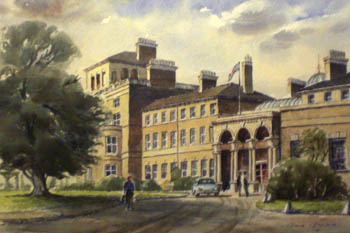 Oatlands Grotto at Weybridge
Oatlands Grotto at WeybridgeOatlands Park Hotel Oatlands Drive Weybridge Surrey United Kingdom KT13 9HB Telephone: 01932 847242 Fax: 01932 821413 Oatlands, literally "lands where oats were grown", gave its name to the Tudor Palace in Oatlands Park. It was already a residence when Henry VIII forced its owner to relinquish the estate to the king in 1538. Here Henry built a sumptuous Palace for the reception of his new Queen, Anne of Cleves. Although she never lived here, it was used by Elizabeth I, James I, and Charles I. After a parliamentary survey in 1650, the palace was pulled down and the name Oatlands was passed to a former Tudor Lodge, built on the 'highest part of the park'. After the Restoration, the Earl of Torrington lived at Oatlands until the estate was bequeathed, around 1716, to the 7th Earl of Lincoln, who built a new mansion. Subsequently there has been extensive rebuilding and remodelling of the house by a series of owners. The 18th century grotto at Oatlands was built in the 1760/70s for the 9th Earl of Lincoln at a cost of forty thousand pounds. It  survived for nearly 200 years but was eventually demolished in 1948. A detailed description of it is available on-line by clicking website below. The following is an extract from the full description: survived for nearly 200 years but was eventually demolished in 1948. A detailed description of it is available on-line by clicking website below. The following is an extract from the full description:
Picture caption: within the Oatlands Grotto was an 18th century copy of the statue of Venus de Medici. This was donated to Weybridge Museum in 1920 and fortunately therefore survived the later demolition. This larger than life sized lady is now in the care of Elmbridge Museum and we are grateful for assistance provided by the museum to secure this picture.Jahanna Schopenhaur visited Oatlands circa 1805, recording the event in her diaries. It was by then the home of the late Princess Friederike of Prussia, consort to the Duke of York. This nocturnal lady lived here in social solitude amusing herself with embroidery. On arrival Johanna was confronted with a stout, irritable lady, wife of the caretaker. Explaining that she had come from Germany to see how the Princess had fared, the party was allowed in. They were shown the extensive park and flower gardens where a large crowd of monkeys sported around. The Princess had loved animals and there were birds, parrots and dogs in great numbers. In her diaries Johanna writes:"The house is neither big nor splendid, but simple and furnished in almost a middle class style. In fact, its greatest ornament is the fine embroidery, worked by the Duchess and her ladies. We found the walks in the grounds most pleasant, although here again there was nothing remarkable apart from a grotto, somewhat fantastically decorated with fossils from Derbyshire and containing a large marble basin. Around it lie the graves of all the Duchess's favourite dogs and monkeys, each with a stone and inscription......" 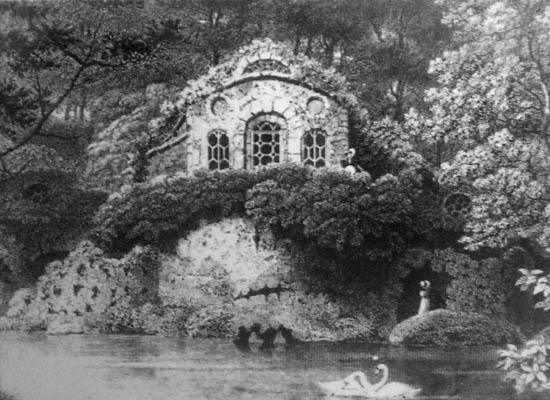
Shortly after in 1815, the upstairs room of the grotto was the venue for a banquet hosted by the Duke of York in honour of the Empress of Russia. The three downstairs rooms included a gaming room, complete with fireplace, chandelier and bamboo chairs. There was also a cold bath room with the statue of 'Venus de Medici' illustrated above. The water was reputedly ice cold and crystal clear. The picture above shows the lakeside grotto. The entrance to the lower chamber was guarded by a "classical" statue out of sight to the left. The entrance to the upper chamber is seen at the centre. The interior of the upper chamber, was described as "The Duchess of York's Sitting Room". It was decorated with a variety of shells and with artificial "stalactites" hanging from the ceiling. This chamber was reached by walking from the rear up one or other of the slightly sloping ramps on either side of the building and passing under the curved arch to the little balcony in front of the entrance. 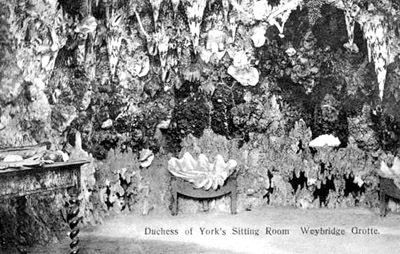 In its later years this grotto became a visitor attraction, the owners charging a small admission fee. In its later years this grotto became a visitor attraction, the owners charging a small admission fee.
The extensive estate with its lake and house are now part of the impressive Oatlands Park Hotel complex. The house and much of the original estate has been a hotel since 1856. The grotto, probably the most remarkable aspect of the estate has not survived. It was blown up by the owners and the Ministry of Works in 1948. Instead there is a neat two column shelter located near the new housing development that offers a refuge from bad weather. It is illustrated in the sequencing pictures at the top of the page where it can be seen as no match for the mythological grotesqueness of the original grotto. 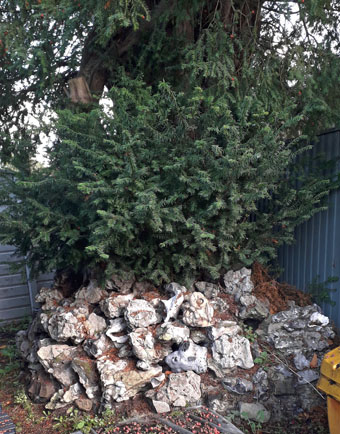
Ironically the grotto does survive today (2021). Not as a structure but as a pile of rocks and shells beneath a conifer near the Oatlands Park Hotel. The original site also apparently has similar rocks scattered in the undergrowth, to be discovered by intrepid explorers. The land is now part of the Lakeside Grange estate and so access is not readily available. But, for those who do venture forth, while there is now no sign of the grotto in the woods on the lake side, there is a strange stone arch. This apparently was located adjacent to the grotto and was nicknamed the Spider Arch in days gone by. 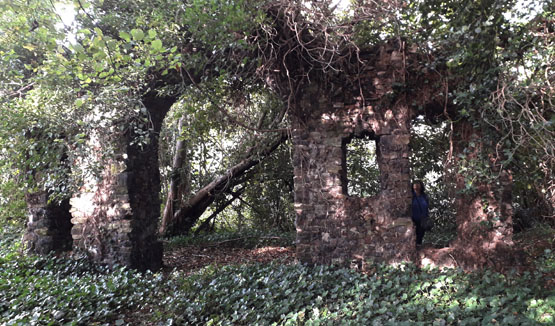
Acknowledgement - our thanks to Clive Morris, local resident for assistance. Further reading: A Lady Travels, Michaelis-Jenna R and Merson W (1988) Routledge. Email: info@oatlandsparkhotel.com (click here to send an email) Website: Click Here ADDITIONAL INFORMATION  
GREAT BRITISH GROTTO GRADING
CONSTRAINTS On private property LANDSCAPE Park or Garden REGION England - Southern THE FEATURES PRESENT GRADED ZERO - no grotto survives |
||||
|